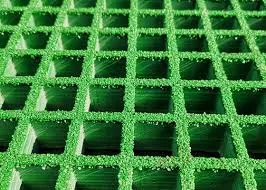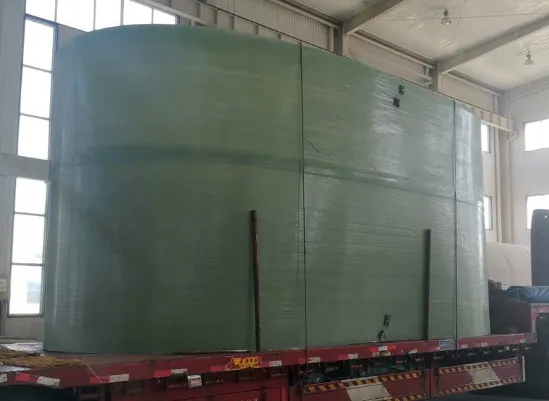
-
 Afrikaans
Afrikaans -
 Albanian
Albanian -
 Amharic
Amharic -
 Arabic
Arabic -
 Armenian
Armenian -
 Azerbaijani
Azerbaijani -
 Basque
Basque -
 Belarusian
Belarusian -
 Bengali
Bengali -
 Bosnian
Bosnian -
 Bulgarian
Bulgarian -
 Catalan
Catalan -
 Cebuano
Cebuano -
 China
China -
 China (Taiwan)
China (Taiwan) -
 Corsican
Corsican -
 Croatian
Croatian -
 Czech
Czech -
 Danish
Danish -
 Dutch
Dutch -
 English
English -
 Esperanto
Esperanto -
 Estonian
Estonian -
 Finnish
Finnish -
 French
French -
 Frisian
Frisian -
 Galician
Galician -
 Georgian
Georgian -
 German
German -
 Greek
Greek -
 Gujarati
Gujarati -
 Haitian Creole
Haitian Creole -
 hausa
hausa -
 hawaiian
hawaiian -
 Hebrew
Hebrew -
 Hindi
Hindi -
 Miao
Miao -
 Hungarian
Hungarian -
 Icelandic
Icelandic -
 igbo
igbo -
 Indonesian
Indonesian -
 irish
irish -
 Italian
Italian -
 Japanese
Japanese -
 Javanese
Javanese -
 Kannada
Kannada -
 kazakh
kazakh -
 Khmer
Khmer -
 Rwandese
Rwandese -
 Korean
Korean -
 Kurdish
Kurdish -
 Kyrgyz
Kyrgyz -
 Lao
Lao -
 Latin
Latin -
 Latvian
Latvian -
 Lithuanian
Lithuanian -
 Luxembourgish
Luxembourgish -
 Macedonian
Macedonian -
 Malgashi
Malgashi -
 Malay
Malay -
 Malayalam
Malayalam -
 Maltese
Maltese -
 Maori
Maori -
 Marathi
Marathi -
 Mongolian
Mongolian -
 Myanmar
Myanmar -
 Nepali
Nepali -
 Norwegian
Norwegian -
 Norwegian
Norwegian -
 Occitan
Occitan -
 Pashto
Pashto -
 Persian
Persian -
 Polish
Polish -
 Portuguese
Portuguese -
 Punjabi
Punjabi -
 Romanian
Romanian -
 Russian
Russian -
 Samoan
Samoan -
 Scottish Gaelic
Scottish Gaelic -
 Serbian
Serbian -
 Sesotho
Sesotho -
 Shona
Shona -
 Sindhi
Sindhi -
 Sinhala
Sinhala -
 Slovak
Slovak -
 Slovenian
Slovenian -
 Somali
Somali -
 Spanish
Spanish -
 Sundanese
Sundanese -
 Swahili
Swahili -
 Swedish
Swedish -
 Tagalog
Tagalog -
 Tajik
Tajik -
 Tamil
Tamil -
 Tatar
Tatar -
 Telugu
Telugu -
 Thai
Thai -
 Turkish
Turkish -
 Turkmen
Turkmen -
 Ukrainian
Ukrainian -
 Urdu
Urdu -
 Uighur
Uighur -
 Uzbek
Uzbek -
 Vietnamese
Vietnamese -
 Welsh
Welsh -
 Bantu
Bantu -
 Yiddish
Yiddish -
 Yoruba
Yoruba -
 Zulu
Zulu
Jan . 17, 2025 03:40
Back to list
frp rectangular tube
Fiber Reinforced Plastic (FRP) rectangular tubes have become increasingly popular in various industries due to their unique properties and versatile applications. These structural components are crafted from a composite of high-performance fibers, such as glass or carbon, and polymer resins, which grants them impressive strength-to-weight ratios, exceptional corrosion resistance, and long-term durability. As industries advance, the demand for materials that offer a balanced combination of mechanical performance and adaptability grows. Delve deeper into why FRP rectangular tubes are becoming the preferred choice for engineers and project managers worldwide.
In terms of sustainability, FRP is making significant strides. Emerging technologies and innovative practices are refining the production processes to make FRP more environmentally friendly. The longevity of FRP products means fewer replacements and less raw material consumption over time, aligning with global initiatives to reduce carbon footprints and create sustainable solutions. The decision to integrate FRP rectangular tubes into a project is often backed by their proven track record across various well-documented case studies. Industries ranging from public infrastructure to high-tech installations have witnessed FRP's transformative impact firsthand. Whether in the construction of lightweight yet sturdy pedestrian bridges, corrosion-proof pipelines, or resilient electrical enclosures, the evidence supporting FRP’s effectiveness is overwhelming. As a result, the authority and trust in FRP as a material of choice continue to grow, endorsed by industry experts and regulatory bodies who have seen its potential and practical benefits. Investing in FRP rectangular tubes is a forward-thinking move that anticipates future industry trends. The global pivot towards utilizing materials that offer enhanced performance, sustainability, and adaptability in various conditions is evidenced by the increasing adoption of composites. As knowledge spreads and expertise deepens, the authoritative presence of FRP in the material spectrum is cemented further. In conclusion, the multifaceted benefits that FRP rectangular tubes present are too compelling to overlook. Their combination of strength, durability, and adaptability makes them significantly beneficial across numerous sectors, from construction to marine applications. As industries continue to confront challenges head-on and seek solutions that align with modern needs, FRP stands as a beacon of innovation and efficiency. By leveraging FRP, businesses not only ensure superior product performance but also demonstrate a commitment to adopting materials that promise reliability and a sustainable future.


In terms of sustainability, FRP is making significant strides. Emerging technologies and innovative practices are refining the production processes to make FRP more environmentally friendly. The longevity of FRP products means fewer replacements and less raw material consumption over time, aligning with global initiatives to reduce carbon footprints and create sustainable solutions. The decision to integrate FRP rectangular tubes into a project is often backed by their proven track record across various well-documented case studies. Industries ranging from public infrastructure to high-tech installations have witnessed FRP's transformative impact firsthand. Whether in the construction of lightweight yet sturdy pedestrian bridges, corrosion-proof pipelines, or resilient electrical enclosures, the evidence supporting FRP’s effectiveness is overwhelming. As a result, the authority and trust in FRP as a material of choice continue to grow, endorsed by industry experts and regulatory bodies who have seen its potential and practical benefits. Investing in FRP rectangular tubes is a forward-thinking move that anticipates future industry trends. The global pivot towards utilizing materials that offer enhanced performance, sustainability, and adaptability in various conditions is evidenced by the increasing adoption of composites. As knowledge spreads and expertise deepens, the authoritative presence of FRP in the material spectrum is cemented further. In conclusion, the multifaceted benefits that FRP rectangular tubes present are too compelling to overlook. Their combination of strength, durability, and adaptability makes them significantly beneficial across numerous sectors, from construction to marine applications. As industries continue to confront challenges head-on and seek solutions that align with modern needs, FRP stands as a beacon of innovation and efficiency. By leveraging FRP, businesses not only ensure superior product performance but also demonstrate a commitment to adopting materials that promise reliability and a sustainable future.
Next:
Related Products









